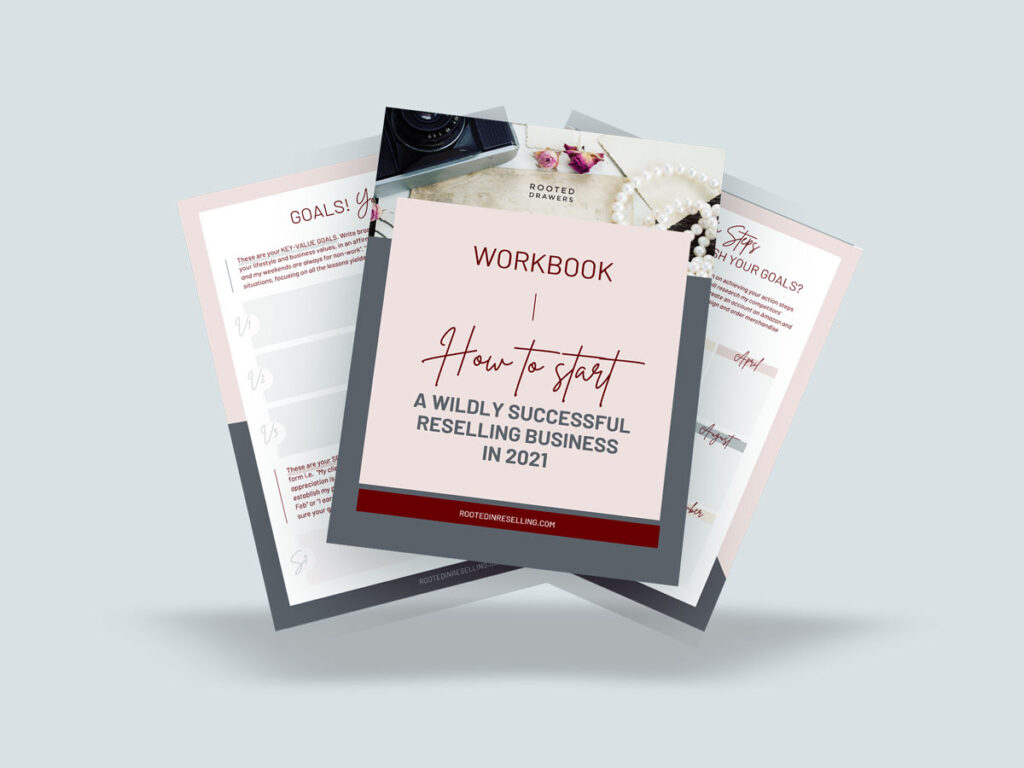8 Minute Read
SKU’s and Their Meaning
A “SKU,” by definition (sourced from investopedia.com), is an acronym for “stock keeping unit,” or a scannable bar code. You’ll most often find these in retail or big box stores, printed on the back of an item. “The label allows vendors to automatically track the movement of inventory. The SKU is composed of an alphanumeric combination of eight-or-so characters.”
Although this sentence says that a SKU could be a “combination of eight-or-so characters,” I don’t think that many of us resellers are going to be labeling SKU’s on items into the millions…but hey, maybe! Anyways, a lot of times these are also simply stickers, with numbers labeled 0000-1000, or even a letter system that you may have come up with yourself.
For my business, I have a few different SKU’s that help me to keep track of my ever growing inventory, and boy am I happy that I started when I did. Trust me, if you are starting any sort of inventory based business, whether you plan it to be big or small, START YOUR SKU’s NOW! No seriously, stop reading, (well maybe after this post), and go do that right now if you haven’t already.
Related: 14 Little Products That Make Big Changes in Your Business
Figure Out Your “Bin” System First
So from what I’ve observed thus far, via social media and YouTube, it seems like most of us like keeping some sort of a “bin” system when it comes to inventory. This is something that I use as well, let me explain how they tie together.
The bin system started when I began having too many random piles lying around my then spare bedroom, (now turned inventory storage area!) I realized that if I was going to keep growing, that I was clearly going to need to figure out some better system of storage and organization. Phew. Organization wasn’t really something I used to be very good at.
 *Side Note: Starting my business was something that really catapulted me into achieving mass organizational skills and a much better sense of the space around me. I’m forever grateful for this, because not only did I get to grow my dreams, but my personal and home life blossomed as well. As the less important knick knacks faded from sight, more peaceful minimalism vibes flowed in. I’m so glad that I took this leap when I did, and although it was a rocky road, I wouldn’t have it any other way.
*Side Note: Starting my business was something that really catapulted me into achieving mass organizational skills and a much better sense of the space around me. I’m forever grateful for this, because not only did I get to grow my dreams, but my personal and home life blossomed as well. As the less important knick knacks faded from sight, more peaceful minimalism vibes flowed in. I’m so glad that I took this leap when I did, and although it was a rocky road, I wouldn’t have it any other way.
Related: 22 Reasons Why I Became a Reseller
So anyways! Back to the organization and bin system. This was something I learned off of the internet of course, as I’m sure many others did, too. It was very helpful, especially since I started out with different colored bins and there wasn’t that many at first. Once this pile of bins starting growing larger though, it was getting tricky to remember what items went where, if sweaters and jeans were separated, etc.
Why and When Did I Decide to Implement a SKU system?
After those bins started stacking to the ceiling, and toppling over one another, it was time to invest in some sturdy, clear bins that I could see through easily and stack easily as well.
*Pro Tip: I highly suggest choosing your bins wisely the first time around, as they will most likely be the ones that you continue to purchase over time. You don’t want to get halfway through and decide you don’t like them anymore! Also, make sure if you decide to invest in shelves, (which I only recommend after awhile into your journey, and only if they are really needed), that they are sturdy, fit in your space, and also fit with your bin size well.
Related: 8 Things You Need to Do to Decrease Your Expenses and Increase Your Profits
The problem with these nice, new sturdy and clear bins however, was that I could no longer tell them apart. This was clearly a problem! (See what I did there.)
So, I ran into the SKU problem. One, I had no idea what SKU’s were exactly. And two, which way to go about using them!? Once I figured out what they were, I tried out this little handy dandy 0000-1000 roll on Amazon. They worked really well, well, until I got to 1000!
A lot of peeps on YouTube I see using resealable Ziploc bags. This works, too. You can simply write the number on the exterior of the bag, and then pop the item in, and remove it when it sells. However, I like to pre bag my inventory, so that I have one less step when it comes to the shipping side of things. This would mean that writing on bags was not going to work for me, unfortunately.
What Happened When I Passed 1000?
 I started making my own stickers, of course! No really, I did this for awhile. I would use plain white sticky labels, write on them, and write the number down on a handwritten spreadsheet. (This too, took eons of my time!) No good.
I started making my own stickers, of course! No really, I did this for awhile. I would use plain white sticky labels, write on them, and write the number down on a handwritten spreadsheet. (This too, took eons of my time!) No good.
After a while of struggling to keep up with things this way, I decided I better figure out a more suitable option for my situation. This led me to scrapping the number system, and started labeling bins by letters. A, B, C, then AA, AB, AC, you get the idea. I also decided to toss that silly spreadsheet as well, cause boy was it giving me a headache and a half.

Now, as I photograph and measure my items, I simply write down what bins have available space from the shipping day prior, and I insert that SKU into the listing.
***(The SKU is now the letters on the bins, plus a few other characters, that I will dive deeper to in another post next Monday! Don’t miss it!)
This makes it super easy when an item sells, because eBay and Poshmark have an option to add your SKU to a particular area that makes it easy to find when the item is sold. (On other platforms, I just add this to the description, if it doesn’t already have an area to add it.)
So, Should You Be Using SKUs in Your Business?
Yes, yes and yes! I definitely would like to recommend very strongly the use of SKUs. They have made my life a heck of a lot easier, and I wish I would have implemented them sooner.
There are still very rare times, when I sell an item that is before the time of SKUs, and I have to pull out that good old spreadsheet. Then I stand there shaking my head wondering why I didn’t make the change sooner! Start now, and make it a priority when listing! Your brain will thank you!
Thank You!
A giant thanks to everyone that has supported me this far into my journey! I greatly appreciate you returning to read my posts hope that you will continue to drop by in the future.
Be sure to Subscribe to be notified of any new articles to come!
Happy selling friends!
Platforms
If you’re up for sifting through some of my one of a kind finds, please be sure to visit any Platform you prefer below!
We have also created a Merch Store that donates 10% of profits to the National Resources Defense Council. If you are interested in helping out to promote Rooted Drawers Stores, please stop by to contribute! Remaining profits will be put towards our ever-growing business and are always genuinely appreciated.
Please feel free to drop any comments below that you would like to add! I am always open to advice, suggestions, or even hearing related stories of your own! I stay as active as possible in the comment section, therefore I will reply to any questions asap.
Pop over to Our Blog Posts Page to view all of Rooted in Reselling posts!
Be Sure To Check Out These Helpful Posts:
My Top Ten Tips to Getting Started on Poshmark!
Read All About How to Get Started on Ebay, and when you’re finished, freshen up your store with My Best Ebay Selling Tips!

Get your FREE Printable Reselling Workbook! Click on the picture to subscribe and get yours NOW and Get Started on Your Very Own Reselling Journey! Bring on 2021!






